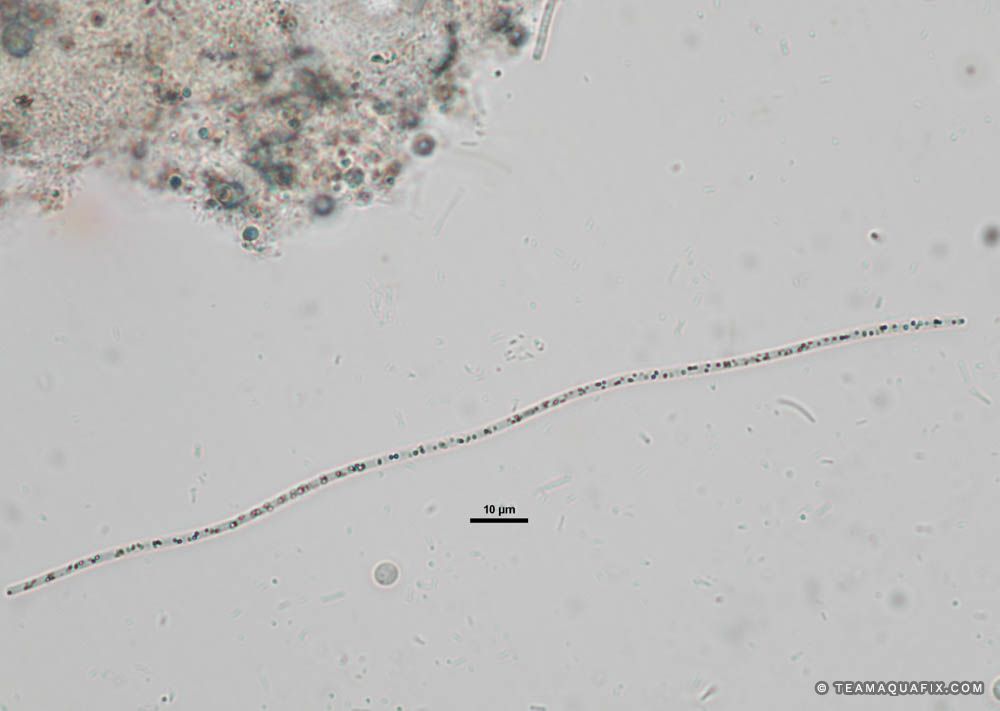
Beggiatoa does not cause any issues in the system itself. However, it is an indicator of low D.O. and high sulfur, which are associated with a high range of plant issues.
If Beggiatoa is observed in your wastewater plant, we recommend increasing aeration to raise the oxidation/reduction potential in your wastewater plant. If this is not possible, Aquafix recommends the use of OxyFresh which helps combat low dissolved oxygen conditions. De-Sulph-A-Nator or ferric chloride can be used for the treatment of high sulfur. To determine the underlying cause of high sulfur or low D.O. contact a technical representative.
Because wastewater issues and the cause behind filaments can be complex, we recommend our Filament ID and Microanalysis. This not only confirms organism ID, but looks at biological indicators, plant design, and incoming substrates to decode your unique process.
Beggiatoa is one of the few motile filaments found in wastewater plants. This sulfide reducing filamentous bacteria uptakes sulfur and stores it as granules. When observing Beggiatoa under phase contrast, the sulfur granules are clearly visible. This filament moves in a slow, gliding motion. It is easiest to see under 400x magnification with phase contrast, however its motion can make it identifiable under 100x (m). Beggiatoa does not cause issues within a system but does indicate the presence of sulfides and sulfites (reduced sulfur compounds). This is usually associated with low D.O. conditions. While this filament does not need to be treated, the low D.O. conditions may be causing other issues that need to be addressed. This filament is usually less than 200 µm in length, 2-4 µm in diameter, and stains Gram and Neisser negative.
A creamery in western Wisconsin experienced a sudden and severe increase in effluent turbidity, poor BOD removal, and poor ammonia removal because their plant was unable to maintain sufficient dissolved oxygen. Aquafix performed microscopic observations on the system’s aeration basins and noticed the relatively high presence of Beggiatoa. This filament thrives in the presence of reduced sulfur compounds which are known oxygen scavengers that can deplete oxygen in aeration basins. After talking to the operators the cause was discovered: a spill of sulfuric acid cleaner. The sulfuric acid cleaner led to elevated reduced sulfur compounds which depleted the oxygen in the creamery system. The plant operators used OxyFresh, Accelerator 7, QwikZyme-L, and QwikZyme-P to solve the unique combination of issues in the plant.
Eikelboom, D.H. & van Buijsen, H.J.J. (1983). Microscopic sludge investigation manual.
Jenkins, D., Richard, M.G., & Daigger, G.T. (2004). Manual on the causes and control of activated sludge bulking,
foaming, and other solids separation problems (3rd ed). CRC Press LLC.

39041 RGE RD 283,
Red Deer County, AB T4E 0M2
Phone: 1-888-466-0031 |
Fax: 1-888-507-9716
To place an order, please fill out the required fields below and proceed to checkout. Ensure all information is accurate, and feel free to contact our support team if you have any questions or need assistance. Thank you for choosing us!